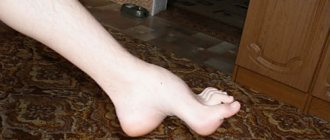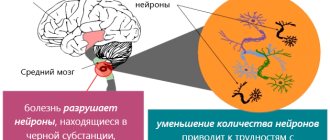Not so long ago, it was believed that migraine occurs only in adults, but recently a similar problem is often observed in children. This form of pathology is mainly found in children of primary school age, but can also occur in adolescents.
The symptoms of abdominal migraine in children are quite pronounced, since not only headaches are observed, but also pain in the abdominal area. Moreover, the child cannot always say exactly where it hurts. Often the pain is localized in the navel area, but can also affect other parts of the abdomen. In this case, the child experiences severe nausea.
Features of the disease
Symptoms of migraine in children do not always manifest themselves only in the form of a headache, since there are several complicated forms of this disease. Each of them has its own specifics.
One of these forms is abdominal migraine. This is a pathology of a neurological nature, in which the usual clinical picture is additionally accompanied by severe abdominal cramps. This condition often occurs in childhood, but can also occur in adolescence and in adults. In boys, the first manifestations of the disease are observed 2-3 years earlier than in girls.
Among the symptoms of migraine in children, it is necessary to highlight the occurrence of severe pain in the abdominal cavity, which is accompanied by malaise, headache, and nausea. Attacks occur periodically and especially severe pain is observed near the navel.
Due to the peculiarities of the development and course of the disease, it is quite difficult to diagnose it, which significantly complicates the treatment process. When the first symptoms of migraine appear in children, you should immediately visit a doctor for consultation, since incorrectly administered therapy will lead to aggravation of the situation and the emergence of even greater problems.
When diagnosing and treating the disease, special attention is paid to provoking factors. Identifying provocateurs and eliminating them allows you to minimize the frequency of exacerbations and reduce the intensity of attacks.
Causes
Doctors cannot say unambiguously under the influence of what factors abdominal migraine develops in children, the symptoms of which cause significant discomfort. Even the mechanisms of development of such pathology have not yet been fully determined. Genetic predisposition and imperfection of the endocrine system in childhood are of no small importance. In addition, children are much more susceptible to external factors than adults. Doctors identify the following causes of abdominal migraine in children:
- the presence of anomalies in vascular development;
- hormonal disorders;
- deterioration of metabolic processes;
- insufficiently good blood circulation;
- low blood glucose levels;
- poor nutrition;
- irrational physical activity;
- emotional overstrain and stress.
TV or computer have a great influence, since if a child spends a lot of time in front of a screen, the likelihood of frequent headaches increases significantly. Negative external influences have a particular impact, in particular such as flickering light, too loud sound, monotonous hum.
If migraine symptoms appear in children under 10 years of age, then in adolescence this unpleasant disease can completely disappear after hormonal changes in the body. In some cases, attacks become very rare, and their symptoms become insignificant. Sometimes the disease can persist throughout life and begins to gradually fade away only in adulthood.
Methods of examination for abdominal migraine
Carrying out diagnostic measures for doctors is quite a difficult task, since the symptoms that accompany the disease are highly similar to other gastrointestinal ailments, and the doctor’s lack of knowledge about migraines of this nature may also affect it. First of all, the patient will need to exclude other diseases in the described area. The following methods are used to study a person:
- Conducting a standard examination by a pediatrician or an expert in the field of gastroenterology (checking the tongue, palpation manipulations, etc.).
- Donation of blood cells, feces and urine for general testing.
- Blood sampling for biochemical analysis.
- Bacteriological assessment.
- Scanning the body using an ultrasound machine.
- Sonography and differential diagnostics.
- Urography of the excretory plan.
- Radiography.
- MRI scanning of the necessary parts of the patient’s body.
Main symptoms
The first symptoms of migraine most often appear in children under 12 years of age, and children aged 5-9 years are mainly susceptible to this disease. Signs of the disease may not be strongly expressed and, in addition, children still cannot say exactly what is bothering them. This makes diagnostics very difficult.
Among the symptoms of migraine in children, it is necessary to note the presence of headache, which mainly occurs in the frontotemporal part. Severe painful sensations have a significant impact on the child’s well-being and behavior. Children become capricious and cry for no reason or, conversely, may become lethargic and uncommunicative.
Basically, the disease occurs without an aura, that is, without visual symptoms, which manifests itself in the form of bright spots in front of the eyes, flickering light, or just fog. The periods between attacks can be quite long, up to several months, so parents often perceive the manifestation of the disease simply as the whims of their child.
It is very important to recognize the first signs and symptoms of migraine in children, as this will ensure faster and easier treatment. Among the manifestations of the disease, one should also note intolerance to strong odors, emotional overexcitation, irritation in bright light.
It is worth noting that a child suffering from an attack of abdominal migraine must be at rest all the time, so parents need to ensure strict compliance with this rule and create a comfortable environment for him. This type of pain is characterized by periodicity. The attacks are repeated after a certain time, and between them the child feels quite normal.
Symptoms
An attack of abdominal migraine is accompanied by symptoms:
- intense diffuse or concentrated pain;
- bloating;
- vomiting, nausea;
- diarrhea;
- excessive sweating in the head, back and palms;
- pallor;
- tremor in the limbs;
- headache;
- sore eyes in bright light;
- sensitivity to loud sounds;
- panic attacks;
- labored breathing;
- dark circles under the eyes;
- severe weakness;
- complete lack of appetite.
Important! Abdominal migraine always occurs unexpectedly and requires complete rest.
It is unacceptable to continue active work during attacks.
After the attack is over, all symptoms disappear, digestion returns to normal, and the patient begins to feel normal again.
Migraine in teenagers
Migraine symptoms in children 14 years of age are much more common than in children. This is explained by hormonal changes in the body, which result in various types of stress. The cause of this pathology is mainly overload with learning, which is often observed in schools. It is worth noting that migraine symptoms in children 16 years of age are mainly found in girls, which is determined by the hormonal characteristics of women.
The causes of this disorder are very similar to those in adults. A growing and developing child's body gradually adapts to various external and internal factors, which is why during this period there is significant stress on the nervous and endocrine systems. And this, in turn, causes the development of the disease.
Migraine symptoms
A characteristic symptom is a severe headache in one side of the head.
More often it is localized in the temple area, but it can also be located in the occipital region. The pain is paroxysmal, not constant, and can change location. Constant headache indicates organic brain damage and is not related to migraine. The attack may begin suddenly or with warning signs. In the prodromal period, patients experience weakness, yawning, decreased concentration, and photophobia. Migraine in children usually causes drowsiness.
Carrying out diagnostics
If the first symptoms of migraine occur in children under 10 years of age or older, you should definitely consult a doctor for diagnosis and subsequent treatment. Initially, you need to distinguish the disease from various types of problems with the gastric system, as well as other organs.
Particular attention during diagnosis is paid to the genitourinary system of the body. To make an accurate diagnosis, the doctor takes into account the existing symptoms. This disease is characterized by the following symptoms:
- headache;
- pale skin;
- photophobia;
- nausea;
- excessive sweating;
- abdominal pain.
In addition, the doctor studies the family history and finds out whether any of the relatives have had migraine attacks. This is very important, since the disease is mainly hereditary. In this case, it is much more difficult to treat. If migraine is abdominal in nature, then attacks occur periodically, only a few times a year, and the rest of the time the child’s health is quite satisfactory.
If a child often suffers from migraine attacks, it is necessary to keep a journal in which the duration of the attack, the symptoms of the aura, as well as all the events that preceded the onset of discomfort are recorded. In addition, the following diagnostic measures may be required:
- Dopplerography of the brain;
- encephalography;
- radiography;
- tomography.
Only after a comprehensive examination will the doctor be able to make the correct diagnosis and prescribe appropriate treatment.
Diagnostics
To understand what treatment abdominal migraine requires, you should analyze the history of the disease and the patient’s complaints. It is very important to determine how long ago the pain began, what it may be associated with, and how the attack itself proceeds.
Before diagnosing migraine, specialists conduct a general examination of the patient and palpate the abdomen. This is done in order to exclude primary pathology from the gastrointestinal tract, as well as other body systems.
Most often, abdominal migraine is diagnosed in children and adolescents. That is why it is important to diagnose and treat the disease in a timely manner.
How to relieve an attack
To improve the child’s well-being and relieve severe pain, it is recommended to put him to bed. It is advisable to first ventilate the room well to ensure access to fresh air. The child needs to create a calm and comfortable atmosphere. It is recommended to apply a cool compress to the forehead.
A light massage of the temporal and occipital parts of the head will help to cope with painful sensations. The movements performed should be as relaxing as possible. During a severe attack, vomiting can relieve the child's condition. However, if there is nausea, but there is no vomiting itself, you can induce it yourself by giving your child boiled, lightly salted water to drink.
Features of treatment
This disease has a completely uncharacteristic course for ordinary migraine, which often makes it difficult to make a correct diagnosis. The main problem in providing timely treatment is that children complain only of abdominal pain, and as a result, they are treated for completely different diseases.
When characteristic symptoms of migraine appear in children, treatment should be carried out by a neurologist who prescribes appropriate medications and other therapies. The doctor determines which treatment method to choose after conducting a comprehensive diagnosis. You must follow a special diet and exclude harmful foods, caffeine-containing and carbonated drinks from your usual diet. Migraines can be triggered by spices, which is why they should also be excluded.
You should not allow your child's stomach to be empty during the day, but you should also make sure that he does not overeat. You need to consume food in small portions several times a day. Stressful situations should be avoided in every possible way; the educational process should be combined with walks in the fresh air and games. Sports are appropriate, but only in moderation, and the child must choose what exactly he wants to do. You should try to minimize your child’s time at the computer, since it has been proven that computer games reduce vision and lead to migraines.
During an exacerbation of an attack, it is necessary to limit exposure to irritating factors, especially sharp sounds and smells, as well as bright light. The doctor selects all medications for the treatment of migraines in children individually and controls their dosage. Despite the fact that the signs of the disease decrease over time, it is necessary to undergo periodic examinations with a doctor. Sanatorium-resort treatment will be very useful, especially in case of a bad environmental situation.
Treatment
Abdominal migraine requires complex treatment. Depending on the severity of the disease, there are two types of treatment:
- Initial. Involves eliminating the situation that may provoke an attack.
- Drug therapy. The use of relaxers and sedatives, painkillers and other drugs.
During the attack itself, the patient should be provided with complete rest and silence, remove bright lights and provide fresh air. A light massage of the head and neck is allowed.
Drug therapy
To quickly and effectively eliminate the symptoms of abdominal migraine in children, treatment is carried out using drug therapy. Medicines help make the child feel better, as well as reduce the frequency and intensity of attacks. The treatment regimen is drawn up by a neurologist, taking into account the patient’s age, symptoms, and provoking factors. To eliminate the symptoms of abdominal migraine in children, treatment involves the use of drugs such as:
- anti-inflammatory drugs;
- painkillers with a sedative effect;
- antimigraine;
- according to indications - antiemetics.
It is worth noting that anti-migraine drugs are used only if other medications do not bring the required result. Ergotamines and triptans are not prescribed in childhood, as they have a pronounced negative effect on the child’s body. Their use is carried out in the most extreme cases and only under the supervision of a doctor.
To eliminate the symptoms of migraine in children, comprehensive treatment must be carried out. Medicines based on ibuprofen and paracetamol, in particular such as Panadol and Nurofen, will help cope with pain. Sometimes caffeine-containing drugs, such as Askofen and antihistamines (Cetrin), can help.
To achieve a more positive result, sedatives such as Sedafiton, Novo-Passit and antidepressants (Deprim) are prescribed. Throughout the entire period of therapy, it is necessary to take vitamin complexes that will help normalize well-being and prevent the frequent development of relapses.
When the first symptoms of migraine appear in children, treatment must be carried out immediately, since the course of the disease, as well as the likelihood of complications, largely depends on this.
Consequences
In some cases, the child experiences a severe course of the disease, when migraine attacks continue for several days. This condition is considered very dangerous, since the process of developing an attack becomes uncontrollable, and painkillers have no effect.
During a severe attack, the vessels of the brain fill with an excessive amount of blood and expand, which can lead to oxygen deficiency in the brain and its swelling. In addition, a prolonged attack can lead to a migraine stroke. In this case, the symptoms of the disease persist even after the attack disappears.
Carrying out prevention
Abdominal migraine attacks occur completely unexpectedly. So far, there are no ways in medicine to prevent them. However, doctors recommend following a number of rules, knowledge of which helps reduce the frequency of exacerbations and improve a person’s quality of life. Disease prevention includes the following:
- maintaining a correct lifestyle;
- normalization of psycho-emotional state;
- active leisure;
- conducting physiotherapy sessions;
- drug support for the body.
It is imperative to exclude from life factors that cause stress and nervous disorders. Moderate physical activity, walks in the fresh air, trips to the sea are required.
To strengthen blood vessels, therapeutic exercises, contrast showers, and aromatherapy will be useful. It is also necessary to periodically conduct courses of vitamin therapy and use drugs whose action is aimed at eliminating the causes of the disease. Prevention is recommended even for those children who have never experienced signs of abdominal migraine.









